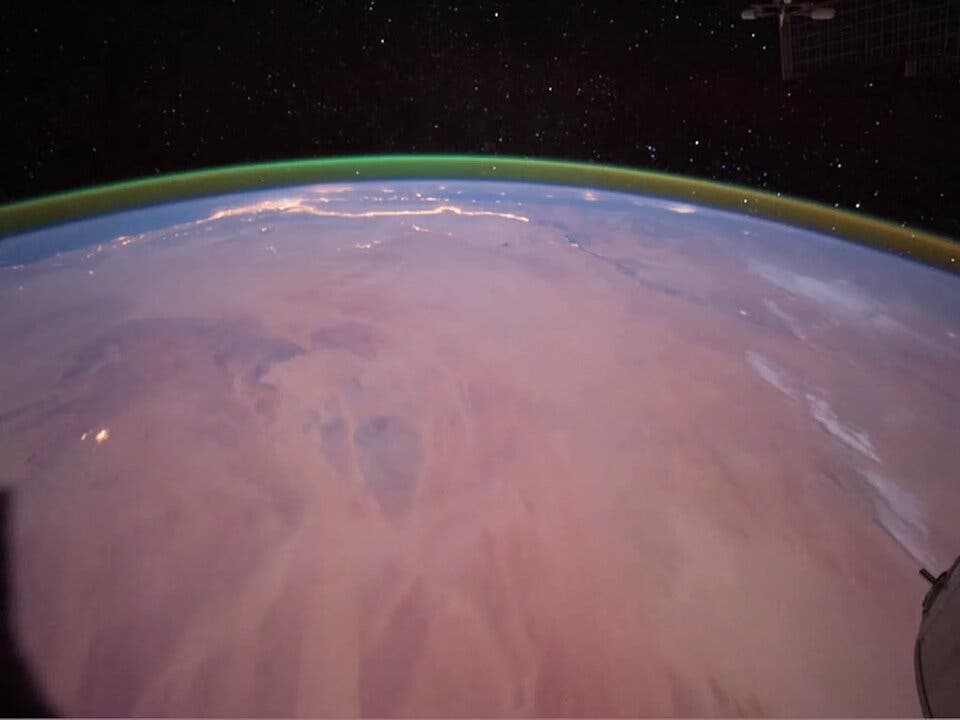The European Space Agency’s Trace Gas Orbiter (TGO) has just spotted a green light in the atmosphere of Mars — the first time such phenomenon is seen on a world beyond the Earth. This is different from the type of aurora we know as the Northern Lights.

Skywatchers on Earth have long enjoyed classic aurorae such as the Northern and Southern Lights. The glow is due to the collisions between atmospheric molecules and charged particles that are racing away from the Sun. The interaction is influenced by the Earth’s magnetic field, which pulls the particles to the poles.
But the night glow is different. It’s generated by the interaction of sunlight with oxygen atoms and molecules in the air. The emission is very difficult to see, even from Earth. That’s why the best images of the green night glow are usually taken by astronauts at the International Space Station (ISS):
“One of the brightest emissions seen on Earth stems from night glow. More specifically, from oxygen atoms emitting a particular wavelength of light that has never been seen around another planet,” study lead author Jean-Claude Gérard said in a statement. “This emission has been predicted to exist at Mars for around 40 years — and, thanks to TGO, we’ve found it,” Gérard said.
The emission was seen using a special observing mode of the TGO. One of the instruments available there, known as NOMAD, has an ultraviolet and visible spectrometer. This allows it to observe in different configurations – one of which positions its instruments to point directly down at Mars.
Co-author Ann Carine Vandaele, the chief investigator of NOMAD, said that despite many efforts they hadn’t been able to capture any green glow in the past. That’s why they decided to reorient their observations to the “edge of Mars,” which is similar to the photos seen of Earth taken from the ISS.
NOMAD was used between 24 April and 1 December 2019 to scan altitudes ranging from 20 to 400 kilometers above the Martian surface, twice per orbit. The green glow was seen in all the datasets observed by the researchers. The emission was strongest at an altitude of 80 kilometers and also varied based on the distance between Mars and the Sun.
The researchers wanted to understand better the green glow in Mars so they also modeled the phenomenon, finding out that it was produced mainly as a breakdown product of carbon dioxide (CO2). Sunlight frees one of the oxygen atoms in CO2, and it’s the transition of this atom that’s glowing green on the Red Planet.
“The observations at Mars agree with previous theoretical models but not with the actual glowing we’ve spotted around Earth, where the visible emission is far weaker. This suggests we have more to learn about how oxygen atoms behave, which is hugely important for our understanding of atomic and quantum physics,” said Gerard.
Observations of the green glow could help inform the models that guide the entry, descent and landing of Mars probes, the researchers hope. Atmospheric density, for example, directly affects the drag experienced by orbiting satellites and by the parachutes used to deliver probes to the martian surface. The Perseverance rover is expected to be launched this year from Florida’s Cape Canaveral Air Force Station.









